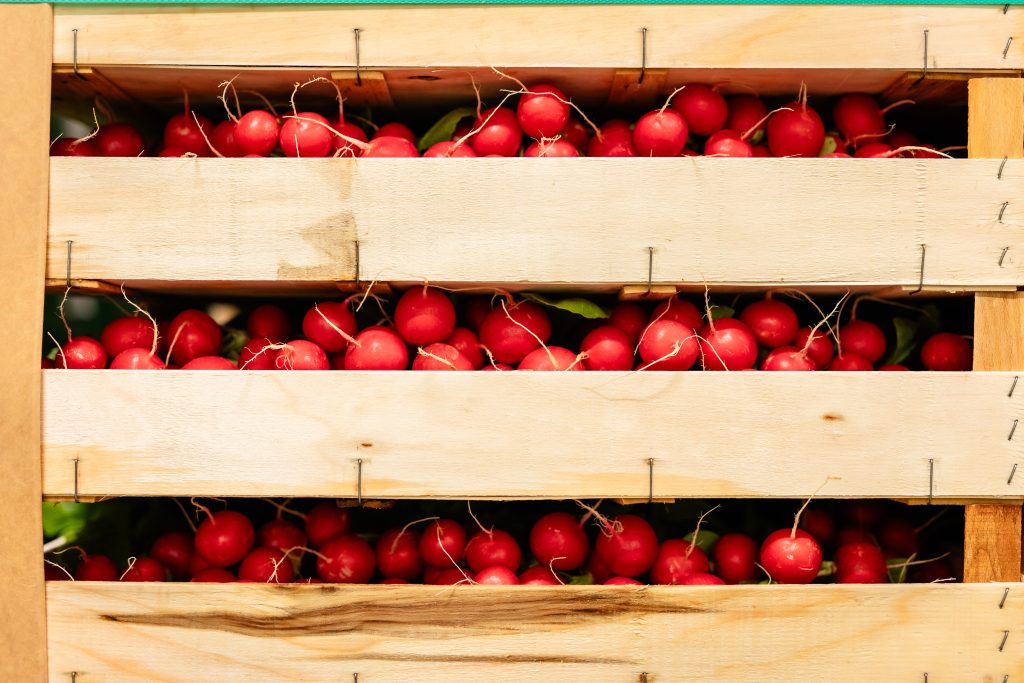Raphanus sativus
Production Calendar
Cultivated Area
The radish, known by the scientific name Raphanus sativus, is a root vegetable belonging to the Brassicaceae family. Characterized by a bulbous root of spherical or elongated shape, the radish varies in color from white to red, depending on the variety. The green leaves, which grow in a rosette around the base, add a decorative element to the plant.
In addition to adding a touch of freshness to dishes, radishes offer health benefits. Rich in vitamins B and C, as well as minerals, they contribute to immune support, skin health, and have diuretic and cleansing properties.

Radishes are exclusively cultivated in greenhouses during the cold period of the year, with harvesting beginning in early November and ending in the first decade of April.
Sowing begins in early October and concludes in March. The crop cycle varies depending on environmental conditions such as temperature and photoperiod.
In autumn, maturation cycles of approximately 30/35 days are observed; in winter, the crop cycle extends for about 55/60 days.
The cultivation area covers 50 hectares of greenhouse surface area, with commercialization amounting to approximately 6,000,000 bunches.
Radishes are harvested in the field, where they are packaged into bunches and subsequently transferred to bins at the processing center for washing, packaging, and subsequent commercialization.
Properties (100 g):
Calories 28 kcal – Water 86g – Protein 0.8g – Carbohydrates 7.5g – Fiber 2g – Potassium 203mg – Calcium 137mg – Phosphorus 29mg
Cultivated Area:
50 hectares
Packaging Type:
Loose Wood
DisposablePlastic
Reusable Plastic
Processing Type:
Packaged in bunches in the field
Bulk processed in Warehouse
Properties (100 g):
Calories 28 kcal – Water 86g – Protein 0.8g – Carbohydrates 7.5g – Fiber 2g – Potassium 203mg – Calcium 137mg – Phosphorus 29mg
Cultivated Area:
50 hectares
Packaging Type:
Loose Wood
DisposablePlastic
Reusable Plastic
Processing Type:
Packaged in bunches in the field
Bulk processed in Warehouse